ETX-105PE Lunar Imaging
with Revolution Imager & iPhone 6s Plus
Posted: 14 June 2016
As I was ending my solar observing session with the Revolution Imager and ETX-90RA and PST on Sunday morning, 12 June 2016, cumulus clouds began appearing and winds began increasing. After a cloudy start to the day on Monday, 13 June, the sky cleared late in the afternoon.
|
Open: Monday, 13 June 2016, 1841 MST Temperature: 89°F |
Session: 982 Conditions: Clear, breezy |
Equipment Used:
ETX-105PE
AutoStar #497 handset
1.25" 26mm eyepiece
1.25" 3X TeleXtender
Camera:
Revolution Imager
iPhone 6s Plus
I set up the Meade ETX-105PE telescope and Revolution Imager on the observatory patio:
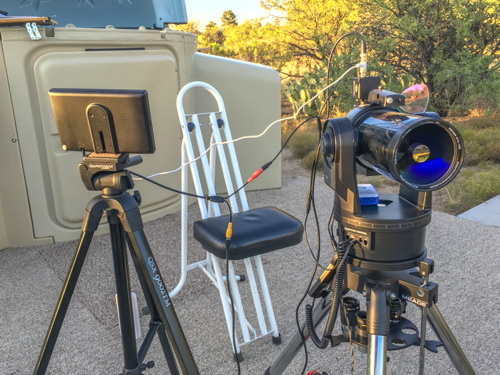
1913 MST: ETX ON. Faked the star alignment since no stars were yet visible before sunset.
Viewed the Moon, 56X and 170X. Really nice views through the small telescope.
I then removed the eyepiece and attached the Revolution at prime focus of the ETX-105. 1920 MST: Imager ON. The breezes had calmed down by now. This is the Moon as seen on the Revolution Imager monitor (as photographed using the iPhone):
North
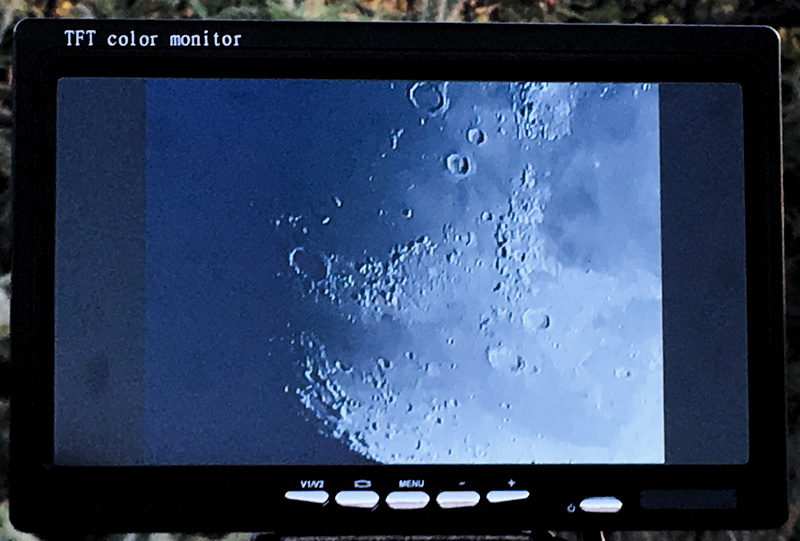
South
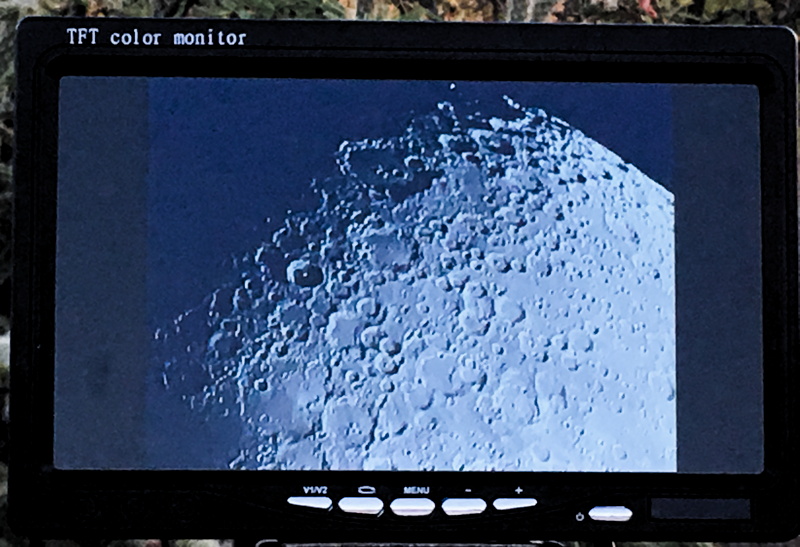
Next, added the 3X TeleXtender and viewed several lunar features, as seen on these iPhone photos of the monitor:
Crater Clavius
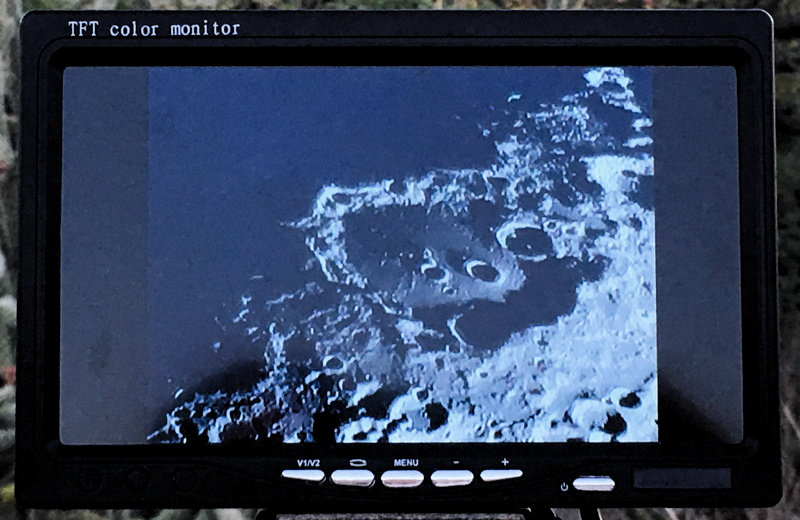
Lunar "Straight Wall"
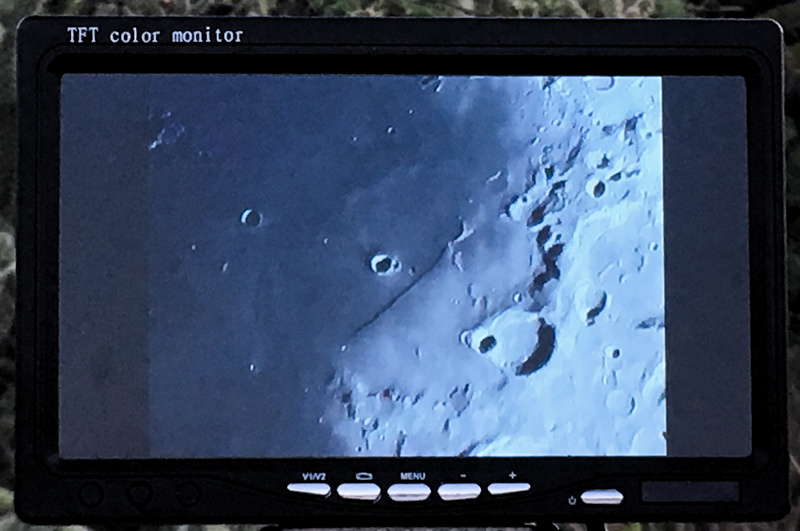
Crater Plato
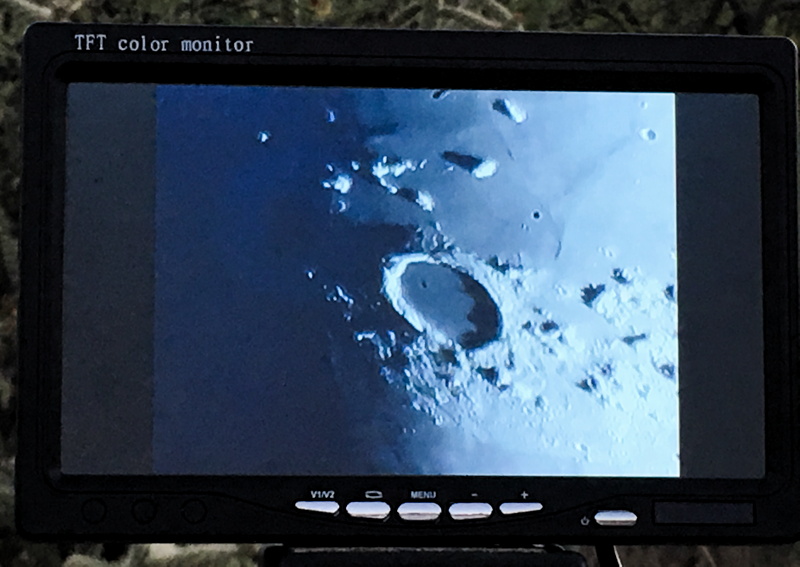
Crater Eratosthenes and mountain shadows
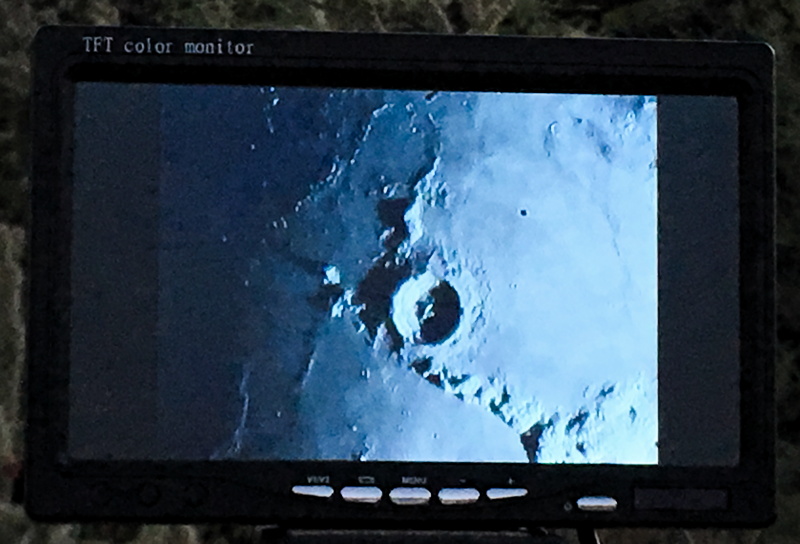
The views on the monitor were actually much better than the above photos show.
1946 MST: ended Revolution Imager use for this night. Did some brief lunar observing, 144X.
Set up for iPhone afocal imaging. Mounted the iPhone 6s Plus on the ETX-105PE using the Orion SteadyPix Universal Smartphone Telescope Photo Mount. This is the Moon, afocal 56X:
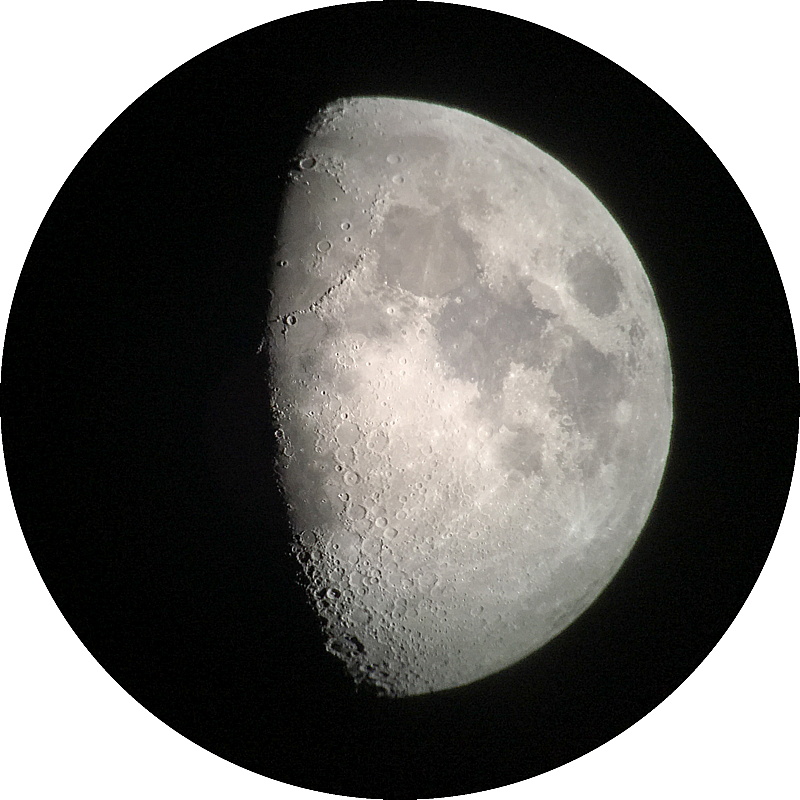
And some photos along the lunar terminator, north to south:
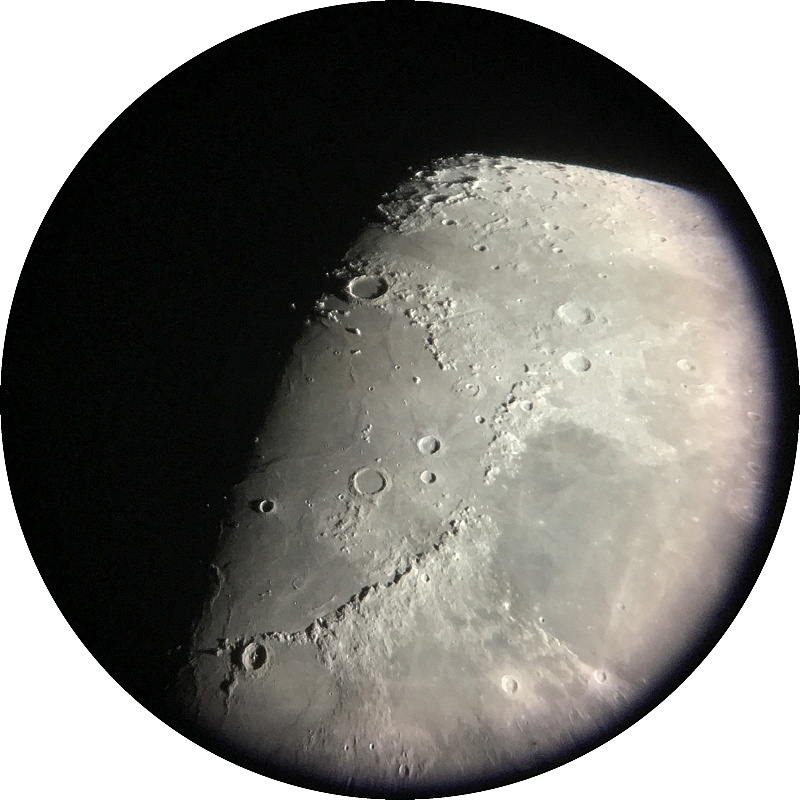
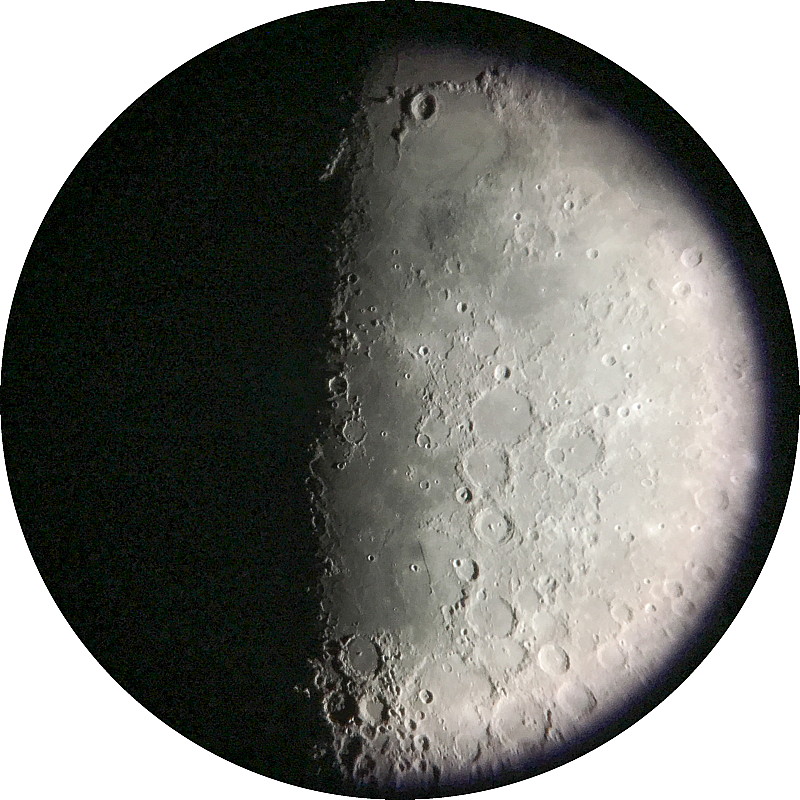
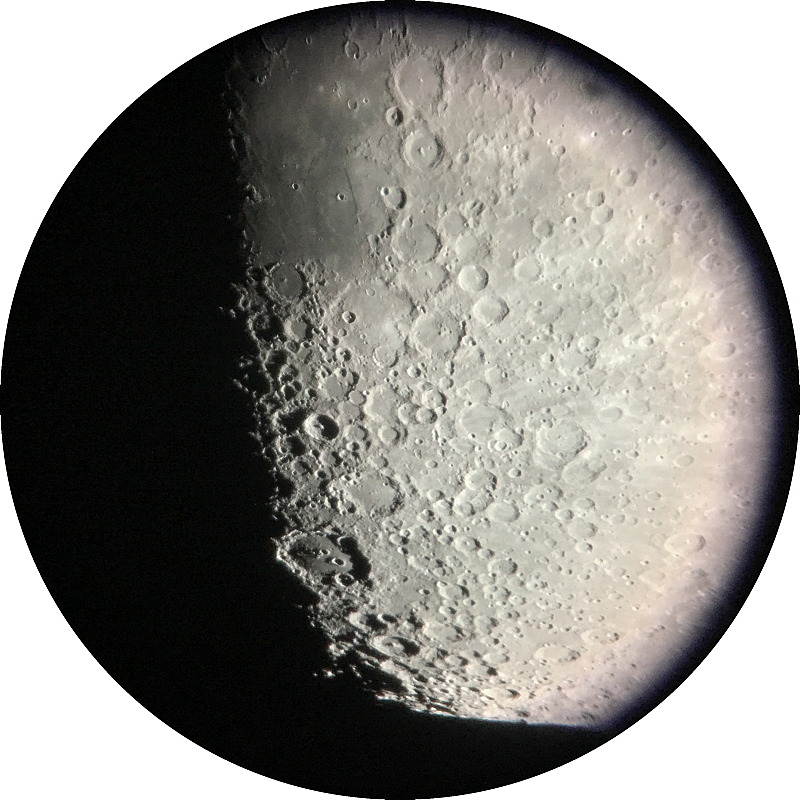
2011 MST: ended iPhone imaging and took a last look at the Moon, 170X.
Viewed Jupiter, 56X. The four Galilean Moons were visible. Using 170X the Jovian cloud bands were very crisp.
Viewed Mars, 170X. Several dark surface areas were visible.
The last object viewed this night was Saturn, low in the southeastern sky. At 170X Cassini Division was easily seen. At 56X the moons Titan and Rhea were visible.
|
Close: Monday, 13 June 2016, 2038 MST Temperature: 70°F |
Session Length: 1h 57m Conditions: Clear |
Comments are welcome using Email. Twitter users can use the button below to tweet this report to your followers. Thanks.
Cassiopeia Observatory Home Page
Copyright ©2016 Michael L. Weasner / mweasner@me.com
URL = http://www.weasner.com/co/Reports/2016/06/14/index.html
